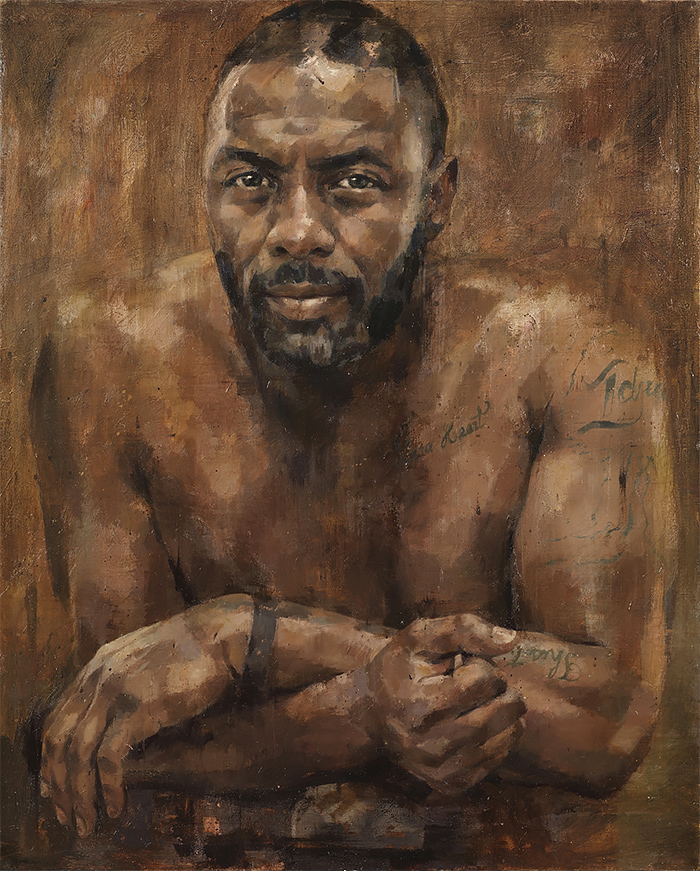
Historically, life drawing for any art practitioner was often necessary.
JONATHAN YEO PAINTINGS SKIN
Howgate, ‘Under the Skin of Jonathan Yeo: An Interview’, ).Last December (2017) at the Royal Academy of Arts, on their top floor the exhibition "From Life" showcased and questioned "what it means to make art from life" and how that method may be developing. So of all the people I’ve painted, I felt more pressure with those two, I think, than with almost anyone else’ (J. ‘You are aware that they may test you and want to know why you’ve made certain decisions. ‘They may do very different work, but you feel that these are people who spend so much time thinking about things that are similar to what you do’, he asserts. But then at some point you need to let the experience of them and the sight of them on different days take over.’ In the same interview, Yeo speaks of the experience of painting Hirst and Perry: figures with whom he felt an unusual affinity.

I then use a combination of photographs to start the initial process of composition and to get a sense of the layout.

‘So it’s not the first photo you take but probably the two hundredth, when they’re getting bored of it. ‘I tend to start off with photographs, partly because you’re looking for that sparky moment when someone is not being conscious of being looked at’, he explains in conversation with Sarah Howgate. His works are defined by their subtle palettes, textured backdrops and often unfinished bodies, wrought from a combination of photographs and live sittings. During his recovery, he regularly visited Tate Britain and began to experiment with different idioms, drawing inspiration from Cubism, Abstract Expressionism and the paintings of Lucian Freud, among others. Yeo rose to prominence in the 1990s and early 2000s, having famously taught himself to paint whilst recovering from Hodgkin’s disease. cat., National Portrait Gallery, London, 2013, p. Mould, ‘Art and Artifice’, in The Many Faces of Jonathan Yeo, exh. As Philip Mould writes, ‘Grayson Perry’s transvestism is not inflated or caricatured (that would be too easy), but rendered with an intense seriousness of purpose that invites the viewer to engage more profoundly with his motivations’ (P. It is a masterpiece of close observation, demonstrating the artist’s ability to reveal the intimate, human characteristics of his celebrity sitters.

Along with a painting of Damien Hirst, completed the same year, the work represents a rare depiction of an artist within Yeo’s oeuvre, taking its place among portraits of public figures including Tony Blair, Prince Philip, Cara Delevingne, George W. Streaks of rose delineate the bodice of his dress, whilst the skirt, walls and floor dissolve into swathes of marbled colour. Against a backdrop of mottled abstract textures, he renders his subject in crisp high definition, lavishing piercing scrutiny upon the veins beneath his skin, the play of light and shadow across his face and hair, and the gleaming whites of his eyes. In a palette of muted pinks and creams, Yeo depicts fellow artist Grayson Perry, dressed as his female alter-ego Claire. ‘Grayson Perry’s transvestism is not inflated or caricatured (that would be too easy), but rendered with an intense seriousness of purpose that invites the viewer to engage more profoundly with his motivations’Ĭompleted in 2013, and included in the artist’s landmark exhibition at the National Portrait Gallery that year, Claire ’ s Room (Grayson Perry) is an iconic work from Jonathan Yeo’s celebrated portrait practice.


 0 kommentar(er)
0 kommentar(er)
